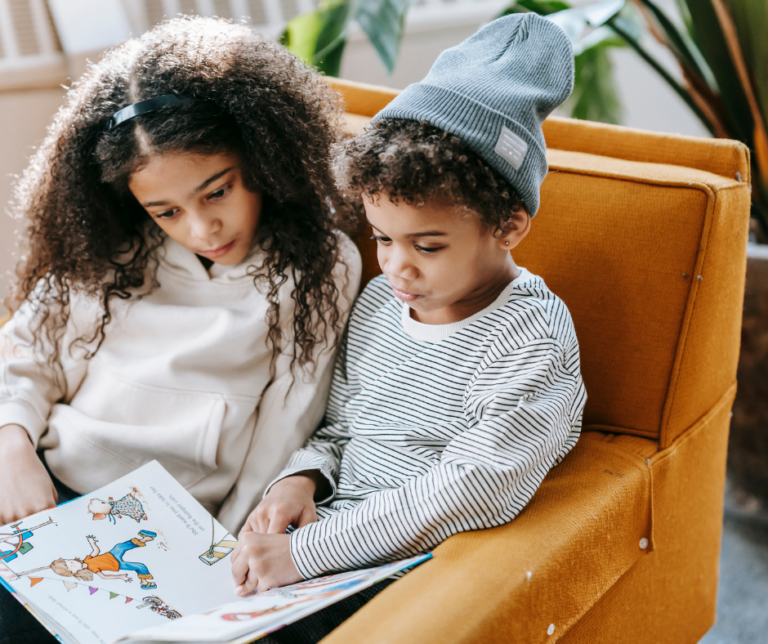I absolutely love books! Reading gives me a break from our fast-paced world. Besides the very obvious advantages of reading (it gives you a break, you learn about new things, etc.), reading can also be a powerful tool for young language learners. No matter what second language your little one is learning, reading can help them build up their vocabulary and their understanding of another culture and country. Reading has also been shown to improve children’s comprehension and listening skills.
How to read to your bilingual learners
Whether your kids are very young or older, sharing a story is always a great idea. Reading is a fantastic opportunity to spend some quality time together. It can turn into a daily routine and an opportunity to talk and learn about interesting things.
Perhaps you are wondering: What is the best way to share a story?
- It’s important to create a relaxed and cosy environment. Add a blanket and a hot chocolate to the mix for cold evenings, or maybe when it is nice and sunny outside, go in your garden and bring a picnic blanket and some cushions! Turn off all electronic devices to minimise distractions.
- Pick books about topics that your little one is interested in. Is your bilingual learner really into space? Or perhaps unicorns? Don’t choose stories that won’t interest them; you want to make sharing a story a magical experience that your bilingual learners will always look forward to.
- Make sure that the story isn’t too complicated or contains too many difficult words. The focus is on reading for fun and to learn something new. Too much pressure or themes that are too difficult will be off-putting to your bilingual learner.
- To build up some confidence in your bilingual learner, you can start off your reading session by talking about the cover. What colours can you see? What is this called? Point at the different characters or objects on the cover to encourage your child to say the words in their second or home language. Talk about the title and what it could mean! If it is a new book, guess what the story could be about.
- Don’t read too slowly, and don’t read too fast! Repeat sentences or words whenever your little one is struggling to follow the story. If the story involves many characters, movements, or funny phrases, you could reinact them or change your voice to fit the characters.
- Also, let your bilingual learner repeat new words and explain them in simple terms.
Remember: It doesn’t matter what age your bilingual learners are! Reading together is a fantastic language learning activity that will nurture their love for reading.
More reasons why reading is great for bilingual learners
- Supporting the home language
In bilingual families, reading in the home language should be a regular activity! Books are simply a fantastic resource for exploring all aspects of a language, and they help teach about your country and culture.
- Books, books, so many books!
Bilingual learners are exposed to such a fantastic variety of books. They will have access to stories that normally are only available in their home or second language. There are so many great books and worlds to explore.
For bilingual learners with a limited vocabulary, I can also highly recommend dual-language books. I’ve written two workbooks – Bee German: German for Children– (number three is in the making) for German learners that are specially designed to support children’s vocabulary and grammar development. There are also dual picture books available that will make first- or second language stories easier to understand.
It doesn’t matter what languages your bilingual child is learning; books are always a fantastic resource and tool for language learning that you should definitely incorporate into your daily language teaching routine.



